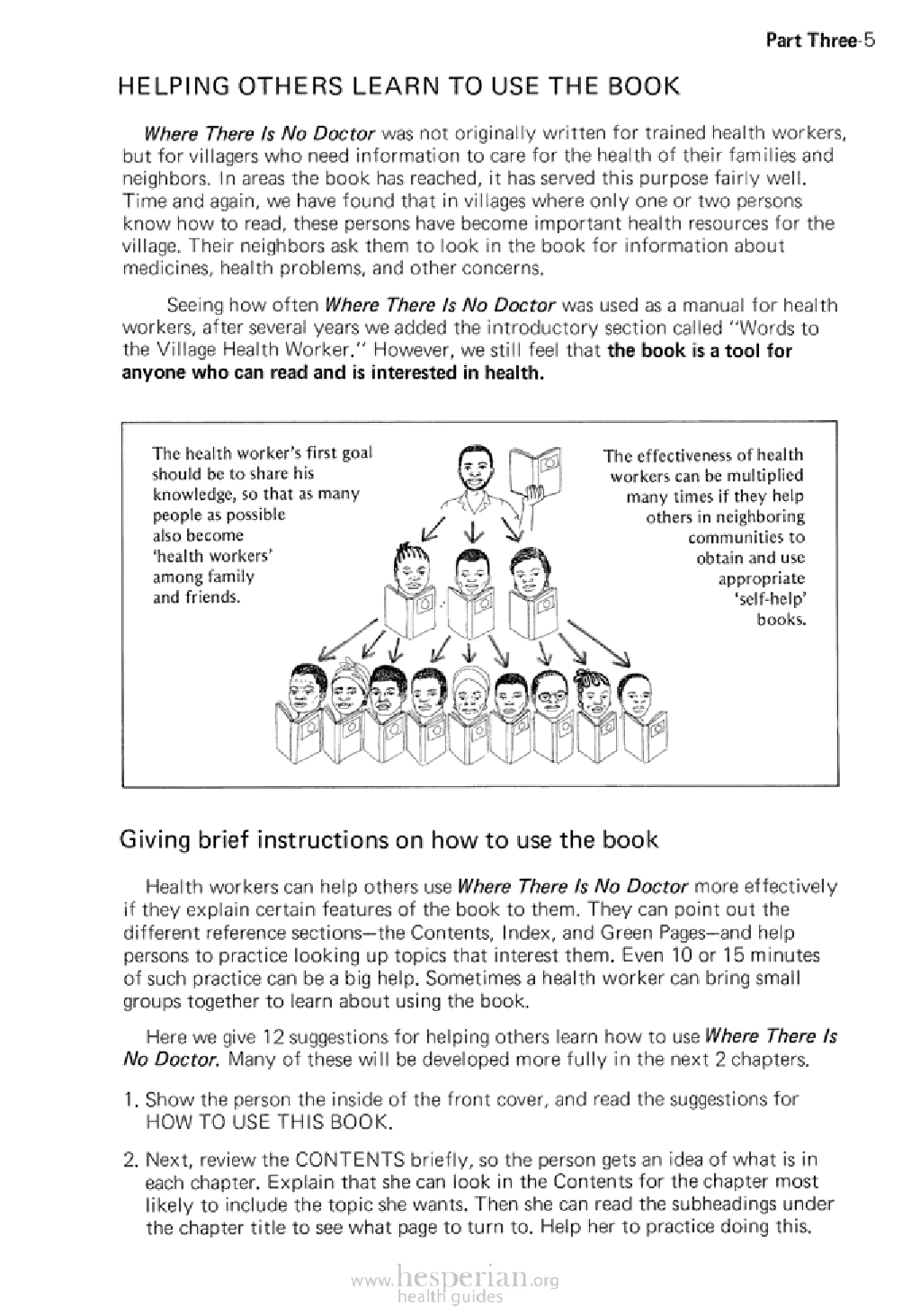
Part Thr2e0e-v
HELPING OTHERS LEARN TO USE THE BOOK
Where There Is No Doctor was not originally written for trained health workers, but
for villagers who need information to care for the health of their families and neighbors.
In areas the book has reached, it has served this purpose fairly well. Time and again,
we have found that in villages where only one or two persons know how to read, these
persons have become important health resources for the village. Their neighbors ask
them to look in the book for information about medicines, health problems, and other
concerns.
Seeing how often Where There Is No Doctor was used as a manual for health
workers, after several years we added the introductory section called “Words to the
Village Health Worker.” However, we still feel that the book is a tool for anyone who
can read and is interested in health.
The health worker’s first goal
should be to share his
knowledge, so that as many
people as possible
also become
‘health workers’
among family
and friends.
The effectiveness of health
workers can be multiplied
many times if they help
others in neighboring
communities to
obtain and use
appropriate
‘self-help’
books.
Giving brief instructions on how to use the book
Health workers can help others use Where There Is No Doctor more effectively
if they explain certain features of the book to them. They can point out the different
reference sections—the Contents, Index, and Green Pages—and help persons to
practice looking up topics that interest them. Even 10 or 15 minutes of such practice
can be a big help. Sometimes a health worker can bring small groups together to
learn about using the book.
Here we give 12 suggestions for helping others learn how to use Where There Is
No Doctor. Many of these will be develop_ed~more fully in the next 2 chapters.
1. Show the person the inside of the front cover, and read the suggestions for
HOW TO USE THIS BOOK.
2. Next, review the CONTENTS briefly, so the person gets an idea of what is in
each chapter. Explain that she can look in the Contents for the chapter most
likely to include the topic she wants. Then she can read the subheadings under
the chapter title to see what page to turn to. Help her to practice doing this.